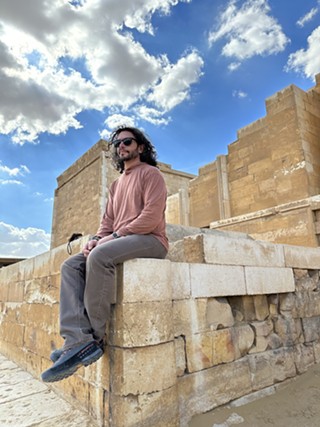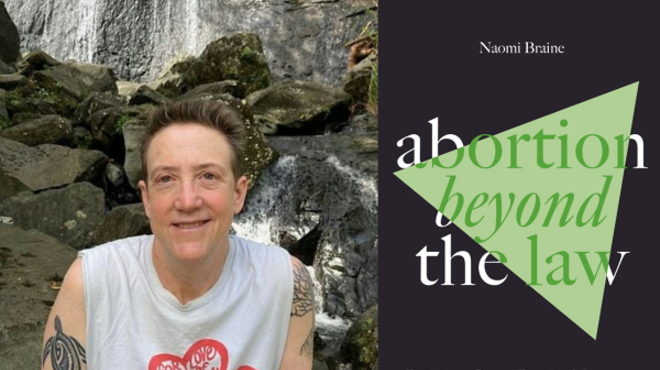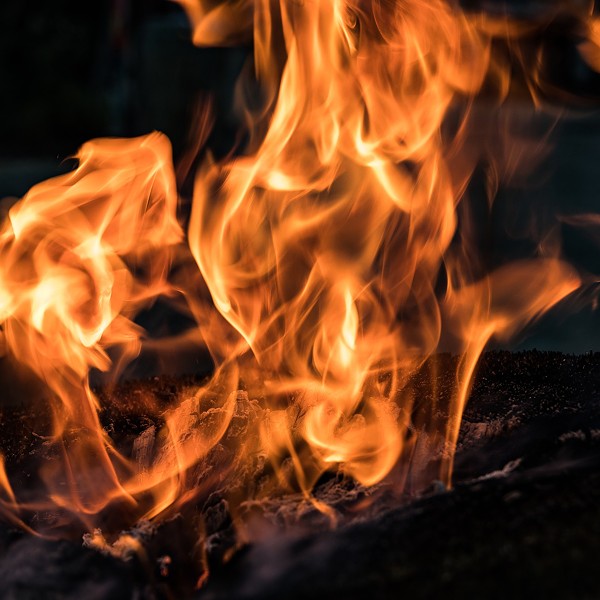What a bargain, let’s buy it.
—Rumi
Esteemed Reader of Our Magazine:
As I write it is a chilly day in May. I am looking across the Wallkill Valley toward the Shawangunk Ridge. Heavy, sculpted clouds fill much of the sky and the sun beams in at a dramatic angle—darkness above, brightness below—the true chiaroscuro that artists emulate. It is rife with contrast, as though the canopy is shouting Yes! and No! with the same breath.
It reminds me of an early springtime memory—I was four or five—standing on a hill looking across a hayfield at to the opposite ridge. The sky was so gray it was almost black. The field and a hill of trees on the other side of the valley were awash with bright orange light as the sun set behind me. The image of light and dark interacting with such power and grace made me gasp then, as it does now.
Strong contrasts are everywhere in springtime. It is a season of fertile conflict. Warmth collides with cold in the air and frozen earth, awakening dormant seeds and spurring trees to sprout new leaves. The confluence beckons the birds to come home, and the otherwise graceful fox to bark noisily in the night, as much in pride as protection for her cubs in the den.
Earlier this spring a finch built a nest on a many-pointed star lantern that hangs from the roof of our porch. It is a hostile place for a home, balancing on sharp metal tips, swinging in the wind. Watching momma finch carry leaves and twigs and fluff to her new construction I thought when the wind blows, the cradle will rock….And sure enough we came home one evening to find the completed nest upturned on the ground surrounded by violet egg shells and smeared yolk. It had the same effect as blood on our three-year old. “That’s very sad,” he said.
But that was early enough for momma finch to get back to work and build another nest in the same place, apparently having learned from her design errors. As of this writing there are four furry finch chicks in the nest on the star, which appears to have become more stable with the accretion of speckled finch poop.
My own mother taught me something about eggs and challenge when I was a child—about the time I first felt the beauty and power of chiaroscuro, light and dark intertwined. Again it was springtime and we were hatching chicken eggs in an incubator. We had candled them and seen the growing chick fetuses inside, and carefully turned the eggs like a mother hen would, twice a day for a couple of weeks. And then we heard them starting to tap-tap-tap at the inside of the shells, and little holes appeared. We watched them work to widen the opening and break through. They worked and then rested—the periods of rest growing longer, the longer it took for the chicks to emerge—their little wet bird bodies exhausted, panting. The urge to reach in and tear off the shell was irresistible. “Don’t do it,” my mother admonished, “if you help them, they will die. They must do it themselves.”
For me this has been a particularly vivid spring. I noticed the intensity and fullness of each stage of transition from winter more than usual—the first whiff of fresh, living air in February; the so-subtle green aura of buds on trees in March; the fulfilling thunderstorms and rain that are a cleansing ablution for the land and atmosphere in April; and the coming to verdant fullness in May.
The liberating effect of spring took me by surprise. More light, the smell of sweet air, its warmth on my skin—woke me up from an hibernation I didn’t realize I was in. To wake up in this way, by surprise, and to feel the parabolic meaning of the signs and events of spring, is a taste of unexpected abundance, like winning a cosmic lottery.
It is, at times, difficult to remember the wealth and abundance and happiness that is always already here. The crimes and controversies that are rampant in every area of life; the wars fought incessantly in ourselves and by extension in our homes, towns, nation, world; the greed for power, wealth, egoic aggrandizement—are compelling attractors of our attention. But there is a force that beckons wakefulness like it pulls the sap out of the roots and into the trunk of the maple in spring. If we relax our gaze, and allow the sap to flow, we become engaged with a world that is rich with life and meaning, and is happy.















